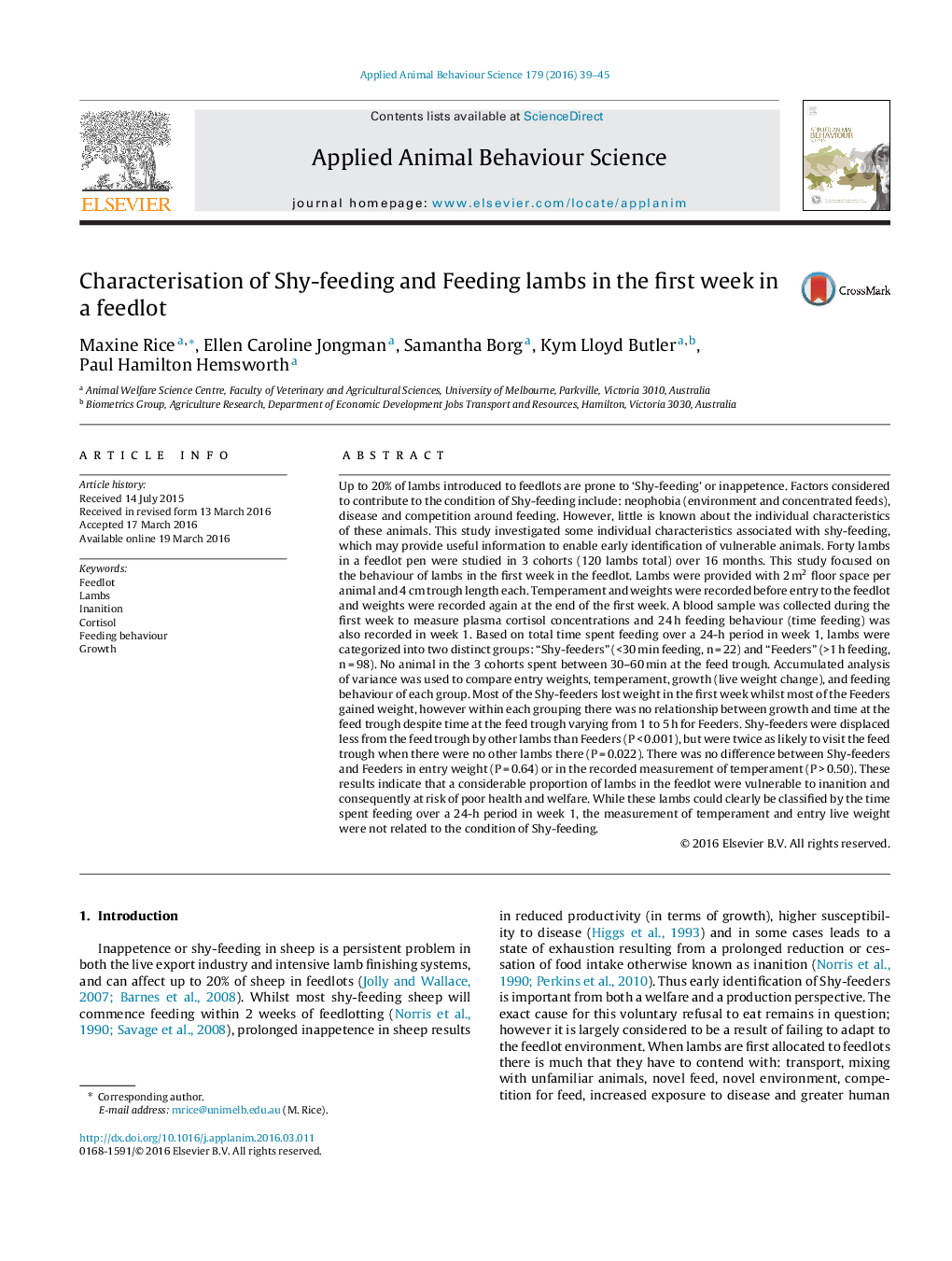| کد مقاله | کد نشریه | سال انتشار | مقاله انگلیسی | نسخه تمام متن |
|---|---|---|---|---|
| 4522370 | 1625327 | 2016 | 7 صفحه PDF | دانلود رایگان |
• Shy-feeding or inappetence is a persistent problem with lambs in feedlots.
• In this study 18% of lambs were classified as Shy-feeders based on feeding duration.
• Shy-feeders accessed the feed trough in a 24 h period for less than 30 min duration.
• There was no relationships between entry liveweight or temperament and Shy-feeding.
Up to 20% of lambs introduced to feedlots are prone to ‘Shy-feeding’ or inappetence. Factors considered to contribute to the condition of Shy-feeding include: neophobia (environment and concentrated feeds), disease and competition around feeding. However, little is known about the individual characteristics of these animals. This study investigated some individual characteristics associated with shy-feeding, which may provide useful information to enable early identification of vulnerable animals. Forty lambs in a feedlot pen were studied in 3 cohorts (120 lambs total) over 16 months. This study focused on the behaviour of lambs in the first week in the feedlot. Lambs were provided with 2 m2 floor space per animal and 4 cm trough length each. Temperament and weights were recorded before entry to the feedlot and weights were recorded again at the end of the first week. A blood sample was collected during the first week to measure plasma cortisol concentrations and 24 h feeding behaviour (time feeding) was also recorded in week 1. Based on total time spent feeding over a 24-h period in week 1, lambs were categorized into two distinct groups: “Shy-feeders” (<30 min feeding, n = 22) and “Feeders” (>1 h feeding, n = 98). No animal in the 3 cohorts spent between 30–60 min at the feed trough. Accumulated analysis of variance was used to compare entry weights, temperament, growth (live weight change), and feeding behaviour of each group. Most of the Shy-feeders lost weight in the first week whilst most of the Feeders gained weight, however within each grouping there was no relationship between growth and time at the feed trough despite time at the feed trough varying from 1 to 5 h for Feeders. Shy-feeders were displaced less from the feed trough by other lambs than Feeders (P < 0.001), but were twice as likely to visit the feed trough when there were no other lambs there (P = 0.022). There was no difference between Shy-feeders and Feeders in entry weight (P = 0.64) or in the recorded measurement of temperament (P > 0.50). These results indicate that a considerable proportion of lambs in the feedlot were vulnerable to inanition and consequently at risk of poor health and welfare. While these lambs could clearly be classified by the time spent feeding over a 24-h period in week 1, the measurement of temperament and entry live weight were not related to the condition of Shy-feeding.
Journal: Applied Animal Behaviour Science - Volume 179, June 2016, Pages 39–45
